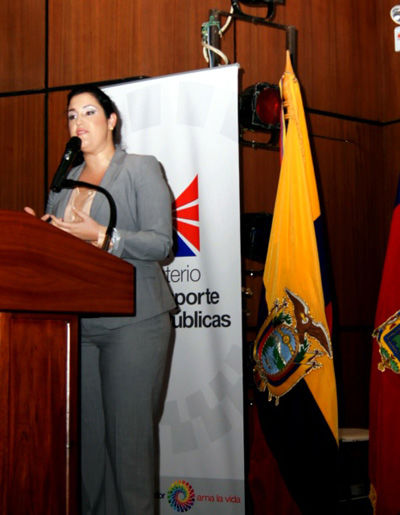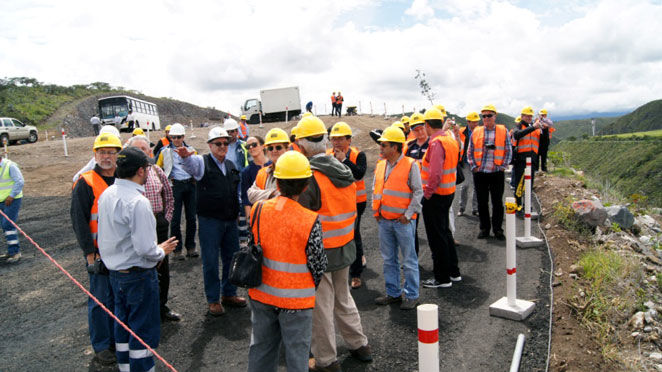International Seminar "Strategies and Methods to Ensure Long Service Life of Pavements"
10-12 November 2014, Quito (Ecuador)
This International Seminar was organized by the Technical Committee 4.2 "Road Pavements" with its Latin American Working Group. It was warmly hosted and arranged by the Ecuadorian Ministry of Transport and the National Committee, together with the Latin American Working Group of TC 4.2.
Summary of the Seminar
Almost 400 people participated in the seminar, from neighboring countries as well as Ecuador. Some engineers and Latin American members of the TC came from Mexico, Chile, Colombia, Peru, Argentina and Brazil among others.
The topics of the seminar had been carefully chosen to meet both the working themes of the Technical Committee and the common interests of the working group, such as'road condition monitoring and road/vehicle interaction','recycling and re-use of materials for pavements' and'reducing the life cycle carbon foot print of pavements'. The topic'strategies and methods to ensure long service life of pavements' was specifically included at the request of the hosting party.
These four topics shaped the four sessions of the seminar. 20 presentations were given to the audience in the seminar, almost half of them were from TC members and half were from Latin-American group. The Minister of Transport of Ecuador, Mrs. Paola Carvajal, opened the seminar, and the chair of the TC, Mr. Seung-Hwan Han, delivered an institutional presentation of the World Road Association and encouraged the Latin-American group to participate in its activities.
At the end of each session, moments for question and discussion revealed a vivid participation from the audience and the local road engineers, showing their interest in the topics developed in the seminar. Several example for implementing the technologies on'quality control of road condition monitoring','strategies for reducing carbon foot print', were shared among the engineers. Local engineers expressed a very strong interest in the use of recycled rubber materials in asphalt binder. Some members introduced their experience in this field and strengthened their confidence in the implementation of this technique in construction site.
The two days of the seminar were concluded by a technical tour to a road construction project enhancing adaptation to local conditions, including technologies for slope stabilization in volcanic rocks and soils, as the construction site was in high altitude.
The seminar pointed out similarities and differences in pavement engineering approaches among participating engineers; it also stressed a common effort for adapting technologies to local situations. The dialogue between the technical committee members and engineers from various geographical backgrounds was considered very fruitful.

